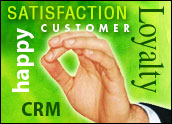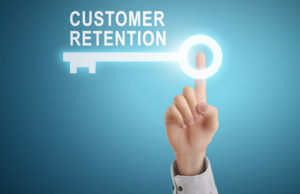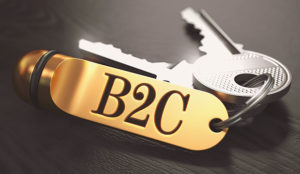
All company executives believe that having loyal customers is a key to business success. However, what are executives really doing about it?
Most will point to their customer care training or CRM system and say, “That’s how we take care of loyalty here.” Some will also point to their monthly newsletter or discount program to demonstrate their efforts. All of these are good attempts. However, they are not enough.
Companies are losing customers at a staggering rate without really hearing from most of them or understanding why. For example:
- Each year, the average company loses 10 to 15 percent of its customer base, according to Bain & Company.
- 84 percent of customers who leave do so because of poor service, according to Forum.
- A typical business only hears from 4 percent of its dissatisfied customers — the other 96 percent leave, 91 percent for good, according to Jim Barnes, author of Secrets of CRM.
Nine Principles
By following these basic nine principles and putting them into practice at your organization, you will foster a culture of greater loyalty and engagement that will reward you with greater profits.
ol.thisol { font-weight:bold }ol.thisol span {font-weight:normal }
- Give customers what they expect. Satisfaction is the difference between customer expectations and actual service delivery. Know your customers’ expectations and be prepared to evolve your product or service to meet them. This is basic business 101, but often it is ignored. Fundamentally, business needs to be a balanced transaction where someone pays for something and expects a fair trade in return.
Expectations of product quality come from many sources, including previous quality levels set by your organization, value propositions set in the competitive landscape and impressions in the media.
- Go beyond simple reward programs. Points and rewards encourage repeat purchases but don’t actually build loyalty. This is demonstrated by a drop in sales when the rewards are no longer offered. True loyalty comes when customers purchase products without being bribed.
- Turn complaints into opportunities. Managing questions, comments and concerns benefits your business in two important ways. First, research indicates that an upset customer whose problem is addressed with swiftness and certainty can be turned into a highly loyal customer. Second, unstructured feedback, gathered and managed appropriately, can be a rich source of ideas.
- Establish channels (electronic, phone, written) to build engagement one customer at a time.
- Encourage customers to voice their thoughts.
- Create metrics to improve response to concerns (“time to first response,” “time to resolution”).
- Create metrics to measure loyalty before and after the problem.
- Use technology to help you centralize the information, create reports and structure drill-downs.
- Engage customers in a two-way dialog. An engaged customer is more than satisfied and more than loyal. They go out of their way to show their association with your company. They also support you during both good and bad times because they believe what you have to offer is superior to others.
Engagement takes your customer beyond passive loyalty to become an active participant and promoter of your product. Engaged customers will give you more feedback — and you should be ready to handle it. All this translates into a customer who will spend more money with you over time.
- Listen to customer feedback from comment cards, letters, phone calls and surveys.
- Respond quickly and personally to concerns of high interest to your customers.
- Organize unstructured feedback for tracking and trending over time.
- Trust your customers to tell you what the problem is.
- Use statistical techniques to discover which action items will have the most impact on your business outcomes.
- Build opportunities for repeat business. Give your customers a chance to be loyal by offering products for repeat business.
Monitor what customers request most and offer products or services that compliment other purchases. In addition, exceed expectations by driving product development to offer more value for less cost. Use technology to track, classify and categorize open-ended feedback.
Be acutely responsive to customer questions, comments and complaints. Often, these are your most loyal customers. If you resolve a complaint quickly, you can actually grow loyalty and drive more business.
- Survey customers and solicit feedback. Actively soliciting information from a population of customers is a time-tested technique pioneered by Arthur Nielsen (creator of the Nielsen ratings) in the 1920s. Survey research can be used for problem identification or problem solving. Questions with simple scales such as “agree/disagree” or “satisfied/unsatisfied” deliver quantitative insight for problem identification. Open-ended follow-up questions provide rich insight for problem solving. Professional services are available to help you with proper survey design.
- Make sure your surveys are short, bias-free and well structured.
- Use random sampling to gather feedback continuously without over-surveying.
- Create summary survey indices that can be displayed graphically and tracked over time.
- Create a centralized system for managing feedback throughout the enterprise.Technology such as Enterprise Feedback Management (EFM) helps to centralize surveys and customer feedback and track both qualitative and quantitative information. EFM is more than just collecting data. It adopts a strategic approach to building dialogs with your customers. Through technology, your company can create a structured, searchable and quantifiable body of information that can be used to drive critical business decisions.
- Empower customers to give feedback through common advertised channels.
- Centralize reporting for proactive surveys and complaint management solutions.
- Structure quantitative feedback into a drill-down or rollup report.
- Make open-ended feedback intuitively searchable.
- Tie customer loyalty and engagement to business outcomes. Orienting your organization to focus on satisfaction, loyalty and engagement is no panacea. However, researchers have clearly documented evidence of short-term benefits to customer/employee retention and long-term benefits to profitability. In the modern economic landscape, loyal customers give your organization a huge competitive advantage.
- Determine whether to measure your engagement outcome by satisfaction, likelihood to purchase again, likelihood to recommend, or another voice of the customer (VOC) metric.
- Create hybrid VOC measurements using more than one metric if necessary.
- Link your VOC metrics with business outcomes like shareholder returns, annual sales growth, gross margin, market share, cash flows, Tobin’s Q, customer churn or employee turnover.
- Be aware that changes in loyalty/engagement scores generally precede changes in business outcomes (typically by 45-60 days).
- Use analysis to predict future loyalty. Businesses use a variety of statistical techniques to make predictions about the potential for future events. Furthermore, predictive analytics may be used to ascertain the degree to which answers from a survey relate to particular goals (such as loyalty and engagement). Tactical knowledge of how action items impact an outcome discourages the wasting of resources on ineffective programs, and competent statistical modeling reveals the insight of which tactical options have the most impact.
- Analyze data using a statistical technique to reveal the most important areas of focus.
- Ask your analyst about common statistical methods including correlation, multiple regression, factor analysis and logic models.
- Recognize that the important areas of focus may change over time to respond with changes in the economic, competitive and demographic environment of your business.
Ask for Help
Following these steps may not be the easiest process, but stay focused and keep your eye on the goal. Increasing your engagement and loyalty equals increasing profits and a strong competitive edge.
Seek help if needed by choosing a partner who has the technology, best practices and experience in place and readily available. The rewards will be great.
Kyle LaMalfa is best practices manager and loyalty expert for Allegiance. He helps companies fine tune and optimize their customer, employee and feedback engagement processes to align closely with idealized standards. LaMalfacan be reached at [email protected].













































Social CRM
See all Social CRM